Home Safety Checklist For New York City
Keeping safe and secure in your house should be your number one responsibility. But are you overlooking one or two useful safety components? Look over this home safety checklist for New York City and find out where your house needs some work.
This guide begins with five whole-home safety techniques, and then we whittle it down room-by-room. Then, you can call (212) 553-6591 or fill out the form below for more information.
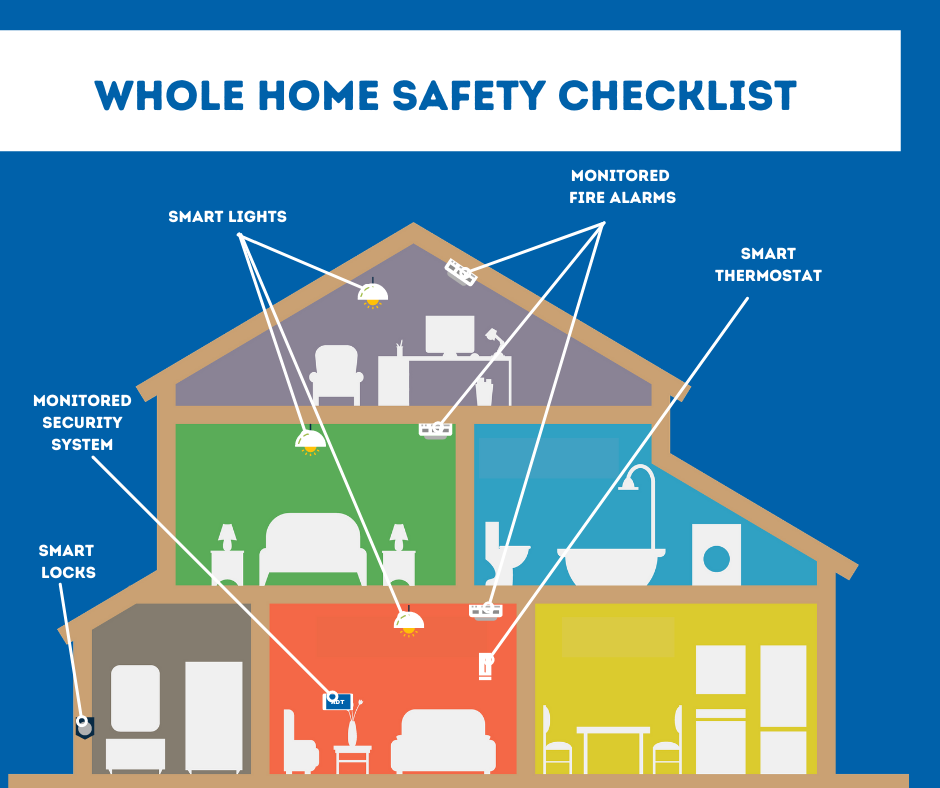
Basic Home Safety Checklist for New York City
While you may want to use a room-to-room method for home safety, there are a few methods that work for the entire house approach. These components can sync together through a touchscreen hub, and can even work off one another. You might also manage all your home safety components using a mobile app, like ADT Control:
-
Monitored Home Security System: Each one of your entryways should have a sensor that alerts you to intrusion. After the alarm triggers, your monitoring expert picks up the call and calls a first responder.
-
Smart Lighting For Each Room: Of course, you can set your smart lighting to make your house more eco-conscience. But smart lights can also help you keep safe during an emergency. Have your lights flip on when a sensor trips to shoo off burglars or illuminate a path to a safe place.
-
Smart Thermostat: Likewise, a smart thermostat in New York City could save you 10%-15% in energy costs. It also can turn on the exhaust fan when your alarms senses a fire.
-
Monitored Fire Alarms: It’s code that you need to have a smoke detector on each level of your house. You can improve your fire readiness by installing a monitored fire detector that senses excessive heat and smoke, and alerts your 24/7 monitoring experts when it detects a fire.
-
Smart Locks: Every doorway that utilizes a deadbolt can be made safer with a smart door lock. Now you can set key codes to family and friends and receive notifications to your mobile device when the locks are activated. Your doors can even automatically open, allowing you to quickly get out if you have an emergency.
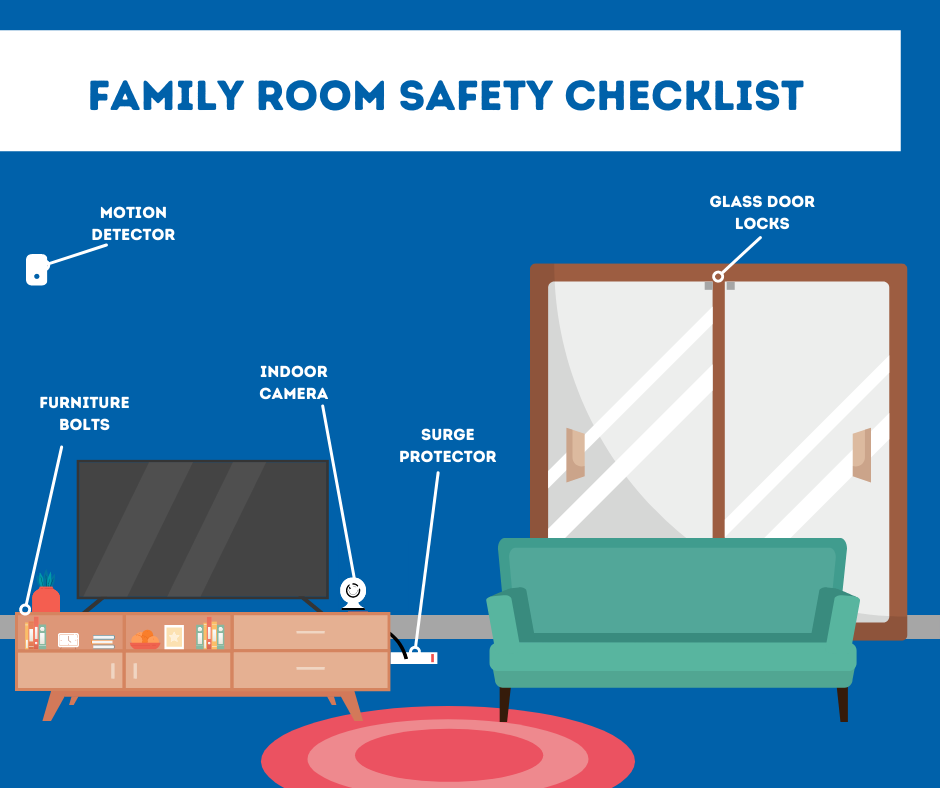
Family Room Safety Checklist For New York City
You’ll spend a lot of time in your living room, so it can be the perfect room to start making your house a safer place. Highly sought after items, like your TV or video games, probably reside in your living room, making it an alluring space for thieves. Begin with placing a motion sensor or indoor camera in there, then take a look at all these suggestions:
-
Motion Detectors: By hanging motion detectors, you’ll hear a shrieking siren anytime they sense suspicious motion in your family room. You’ll want motion detectors that filter out a dog or cat or you’ll get a tripped alarm each time your dog comes in for a drink of water.
-
Indoor Camera: An indoor security camera offers a constant watch on your family room. View real-time feeds of everything so you can know what’s happening from the mobile app. Or speak with your kids in the family room using the two-way talk feature.
-
Surge Protector/Outlet Maintenance: Safeguard all your electronics and quit overburdening your electric system with a surge protector. For additional convenience, set up a smart plug with a surge protector in the unit.
-
Heavy Furniture Secured To The Wall: If you have any small children, you’ll want to bolt your entertainment center or other heavy furniture to a wall. This is especially crucial if your family room has rugs or carpet that can make objects extra unbalanced.
-
Enhanced Locks For Sliding Doors: If your family room uses a glass door that leads to a deck, patio, or outside porch, you already can see that the door lock is pretty flimsy. Put in a custom lock, like a bottom bar or small locks that bolt to the top and bottom of the frame.
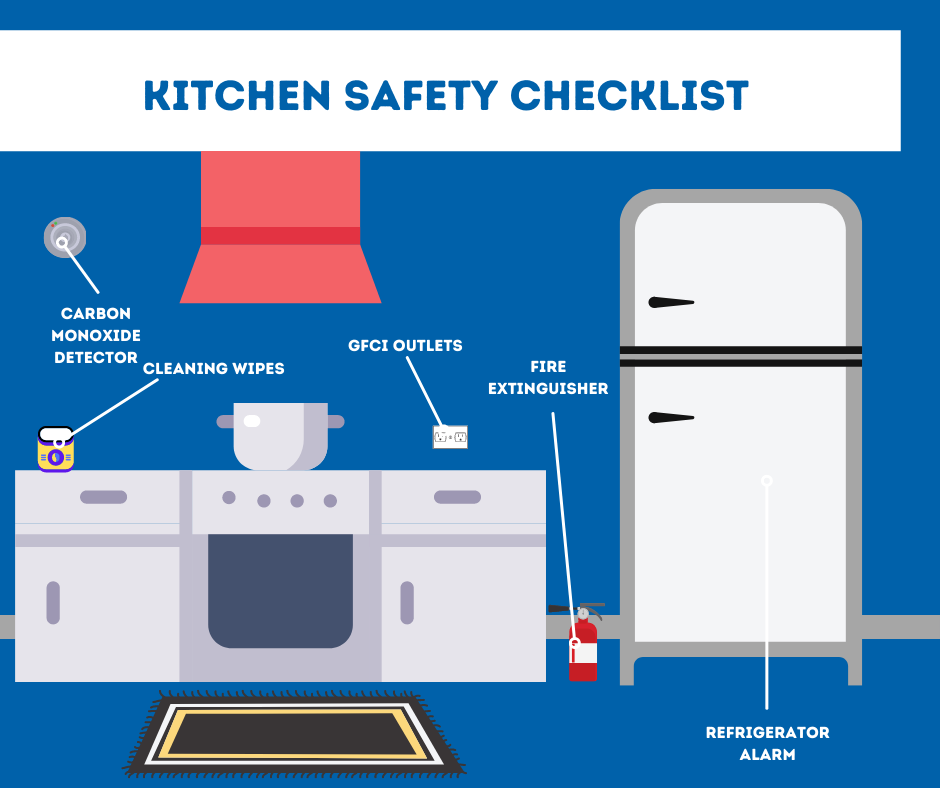
Kitchen Safety Checklist For New York City
Your kitchen has plenty of items that can add comfort and safety to your house. Many of these things should be simple to add and can be bought from the Target or Walmart:
-
Fire Extinguisher: Fire can spring up from an overfilled pot or an errant grease splatter. Always have a fire extinguisher at the ready for any cooking emergencies.
-
Circuit Interrupter Box On Each Outlet: A circuit interrupter outlet should be installed anywhere they’re by water to ward off a deadly shock. That includes the plugs around your sink and kitchen counter. For 30 years, it’s been required to have one GFCI per circuit. But if you don’t want every outlet to flip off when one outlet surges, try to use an unchained GFCI per outlet.
-
Monitored CO Detector: A carbon monoxide detector is handy in kitchens that use a gas stove and oven. If your gas burners malfunction, the CO detector will cause a loud, buzzing siren and contact your monitoring expert.
-
Clorox Wipes Or Spray: The most overlooked safety problem in the kitchen is actually bacteria and contamination that comes with uncooked meat and vegetables. Always have disinfectant wipes or a bleach spray to scrub off your surfaces when cooking.
-
Refrigerator Alarm: The items in the refrigerator have to remain at a constant temperature to stay healthy to use. If you accidently leave the fridge or freezer door open, then a small beep will remind you to check the seal. Some fridges come with a pre-installed alarm, some don’t, and you’ll have to pick up an external alarm from the store.
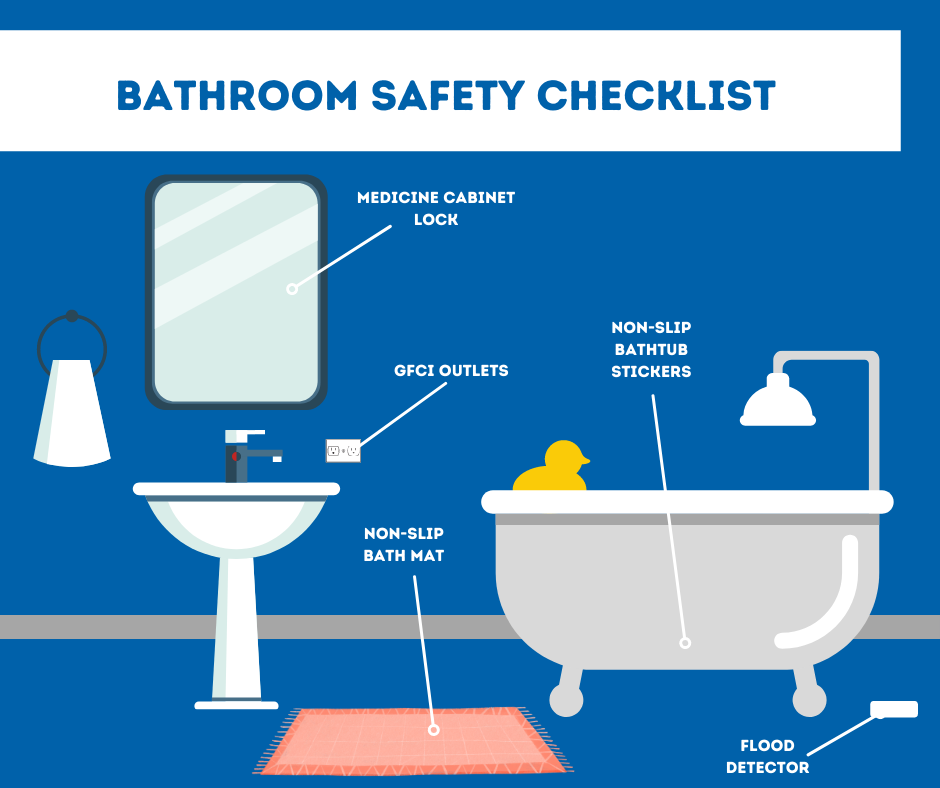
Bathroom Safety Checklist For New York City
Just because there’s not a lot of space in your bathroom doesn’t mean that there aren’t safety hazards. From flood detectors to anti-surge outlets, here are five safety ideas for your bathroom:
-
Flood Detectors: A leaking toilet or shower can create extensive damage. Discover a leaking pipe with a flood detector and save yourself from renovating the whole bathroom.
-
Textured Shower Mats: A slip in the bathroom can be devastating, causing pulled muscles, gashed heads, or sprained ankles. You can prevent these issues with a non-slip bath mat for while you towel off.
-
No-slip Bathtub Strips: Another water hazard, a tub can be a slick place to be on. Make sure each bathtub has some non-slip strips so your feet and toes have a textured patch to grip.
-
Medicine Door Lock: If you have little children or anyone with memory lapses, you should take extra care regarding medicine. Hide away your prescriptions by using a medicine cabinet with a latch that locks.
-
GFCI Circuits: While installing better outlets in the kitchen, you need to also use a safer circuit interrupter outlet on every bathroom receptacle. These will cut the electricity if water enters the outlet or they experience a sudden jolt from a hair dryer or curling iron.
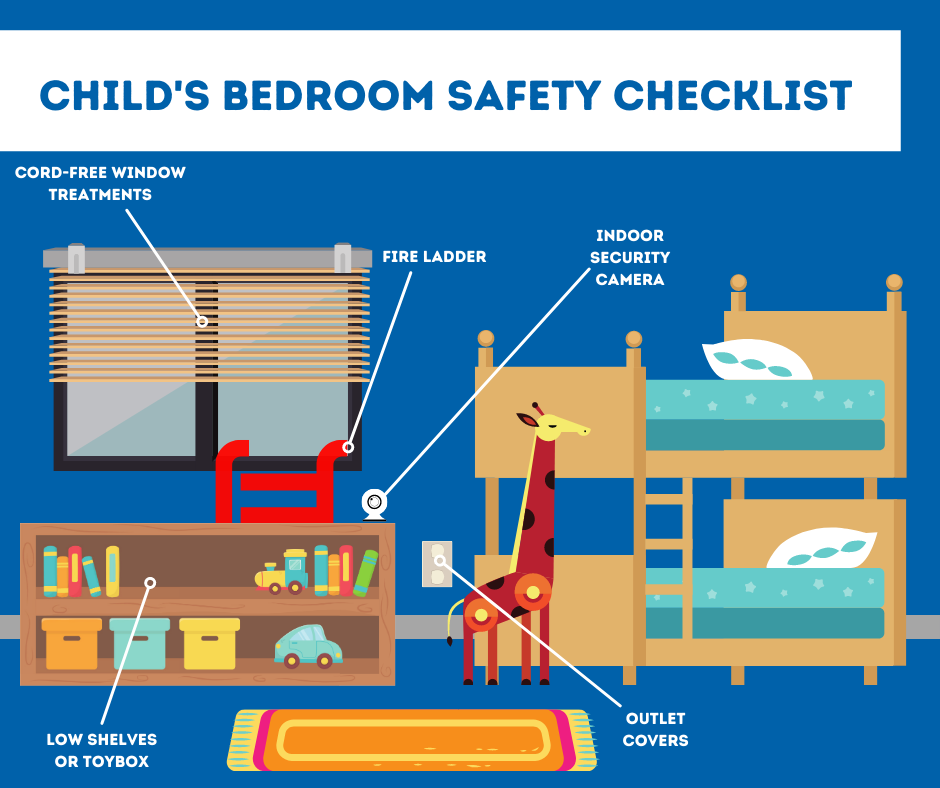
Child’s Bedroom Safety Checklist For New York City
Your child’s bedroom should counterbalance safety with manageability. If their window shades or other items are safe but tricky to manage, then your child may try dangerous activities -- like climb a chest of drawers -- to touch them. Here are 5 easy, yet safe, ideas:
-
No Cord Window Treatments: Safety experts have designated corded window treatments an unsuspecting danger for kids and pets. Put in motorized treatments that your child can easily open and close via remote control. Or better yet, pair your motorized treatments to your ADT smart hub so they can raise on a schedule at dawn, and close in the evening for extra privacy.
-
Tableside Security Camera: A security camera perched on your kid’s desk or dresser can act like a high tech baby monitor that you can view from a mobile device. And when they want you, they can push the 2-way talk feature included on the camera.
-
Outlet Plug Covers: While every outlet should have protective covers on them to protect your young children, this is especially needed in their bedroom. It’s the main place in your home where your toddler will most likely play by themselves without consistent adult supervision.
-
Window Fire Ladder: If you use bedrooms on an upper floor, then you will want to put in a window fire ladder. These can let your children escape even if the stairway or ground floor are on fire. Make sure to rehearse how to use them a few times a year.
-
Toy Chest Or Low Bookshelves: It’s weird to think about a toy box as a safety component, but you’ll understand if you’ve ever walked on an action figure in your socked feet. A uncluttered floor let your child have a quick retreat during an emergency.
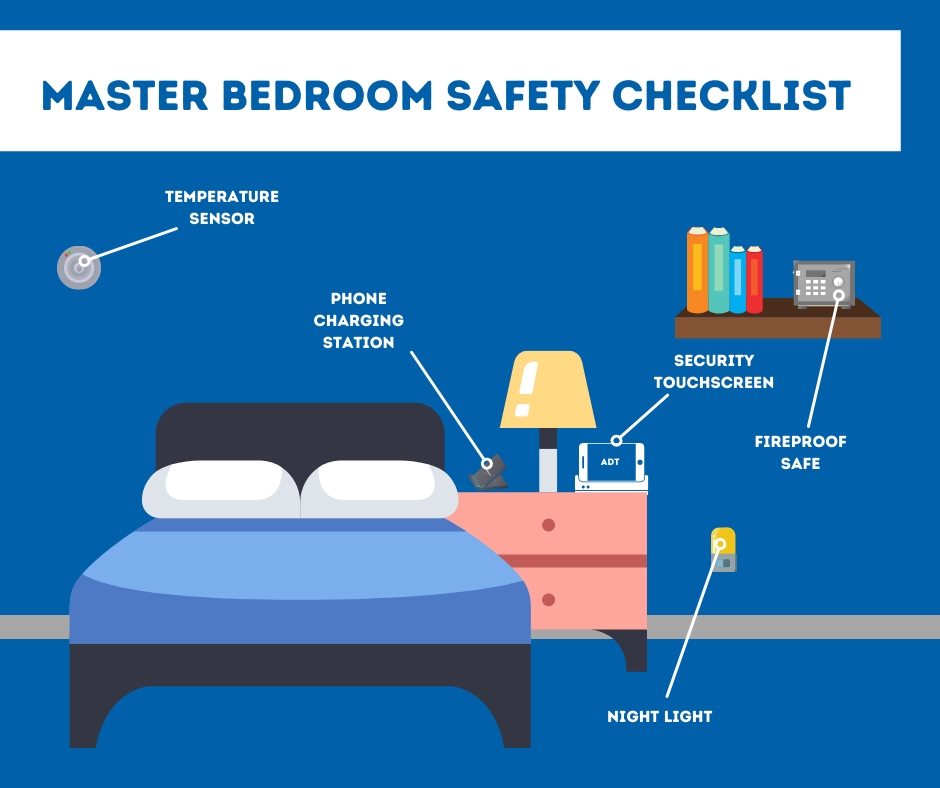
Master Bedroom Safety Checklist For New York City
Your master bedroom should be your calm space, so let your safety devices make life easier when you experience an emergency event. After all, being jerked awake by a high-decibel siren can be confusing.
-
Security System Touchscreen: Having a smart hub on your bedside table gives you a sense of what’s going on without jumping out of bed. You could always use your ADT smartphone app. However, the touchscreen can be faster to use when you’re bleary-eyed and finding your bearings.
-
Personal Charging Station: We depend on our smartphones for almost everything now GPS, web browsers, time wasters, and maybe even phones. The only problem is that a dead phone will cut us off from the outside world if something goes wrong. So, a an easy-to-use charging station becomes an important part of your nightstand.
-
Nightlight/Smart Lights: A small light can calm you when you’re jolted awake from a siren or other loud sounds. If you have trouble falling asleep with a small nightlight, use smart bulbs in your fixtures. Then you can get light on-demand with a button push or vocal command.
-
Fireproof Safe: Store your vital paperwork like insurance cards, medical information, or a spare checkbook in a fireproof lockbox. Your lockbox can be a large one that camps out out of the way or a small portable lockbox that you can grab on your way out during a fire or break-in.
-
Heat Sensor: The issue with a master bedroom is that they tend to feel too hot or be cold because they sit far away from the thermostat. A temperature sensor will talk to your smart thermostat so you will have a pleasant, peaceful sleep at the perfect climate.
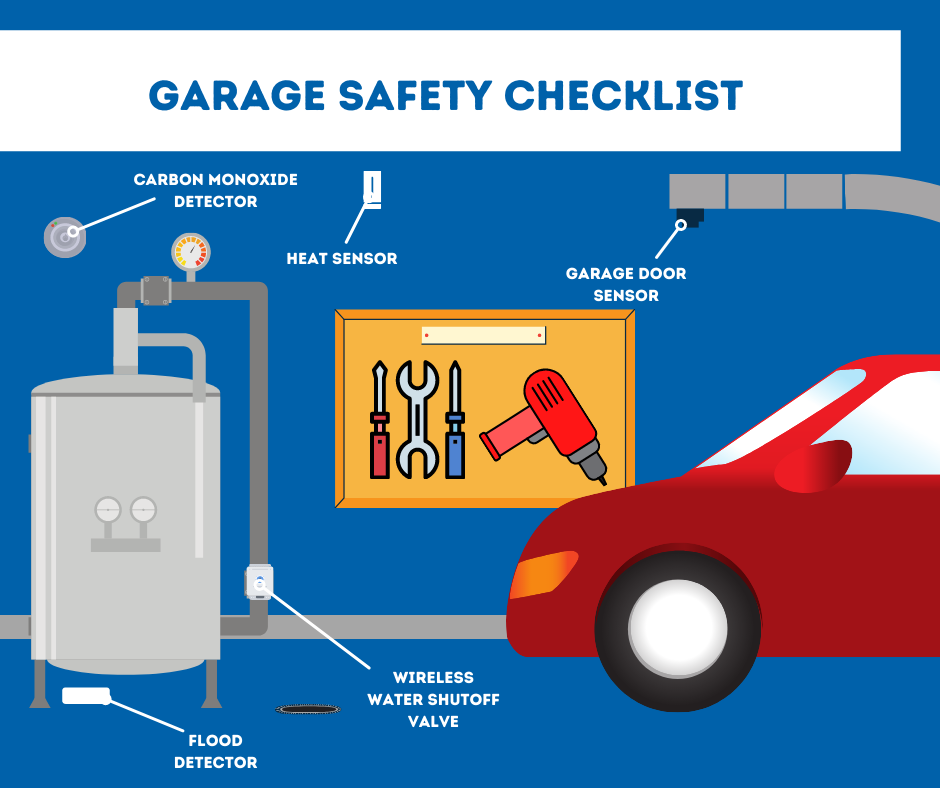
Basement/Garage Safety Checklist For New York City
Most safety issues in the basement or garage are with your water heater or furnace. Seeing issues early can prevent bigger emergencies in the future. So, as you look around your garage or basement, check over these safety items:
-
Water Sensor Or Sump Pump Alarm: Placing a flood sensor in back of your water heater and sump pump can prevent you from finding a mess when you walk into your basement or garage. The last you need is to waste the weekend getting rid of standing water and going through all those storage boxes.
-
CO Alarm: It’s nice to hang a carbon monoxide detector in an area where a CO leak can occur. If you use gas heat, you should put an alarm in the same room as your inbound pipes.
-
Wireless Water Shutoff Valve: If your flood sensor senses a hot water heater leak or a busted pipe, then you will have to cut off the primary water valve quickly. With a remote shutoff valve, you can block water flow from your phone. That’s nice when you’re out of town and receive an emergency leak alert on your phone.
-
Garage Door Sensor: Leaving the garage door up leads to all sorts of problems. You can lose heat or air through that open door, and all sorts of animals or lurkers can just wander in. A sensor will notify you about a forgotten garage door and lets you lower it remotely.
-
Temperature Sensor: A heat alarm in your basement or garage is a definite if you worry about frozen pipes. The temperature in these areas can be surprisingly different than the rest of the house, so you will want to have a close look on the temperature by using the ADT mobile app.
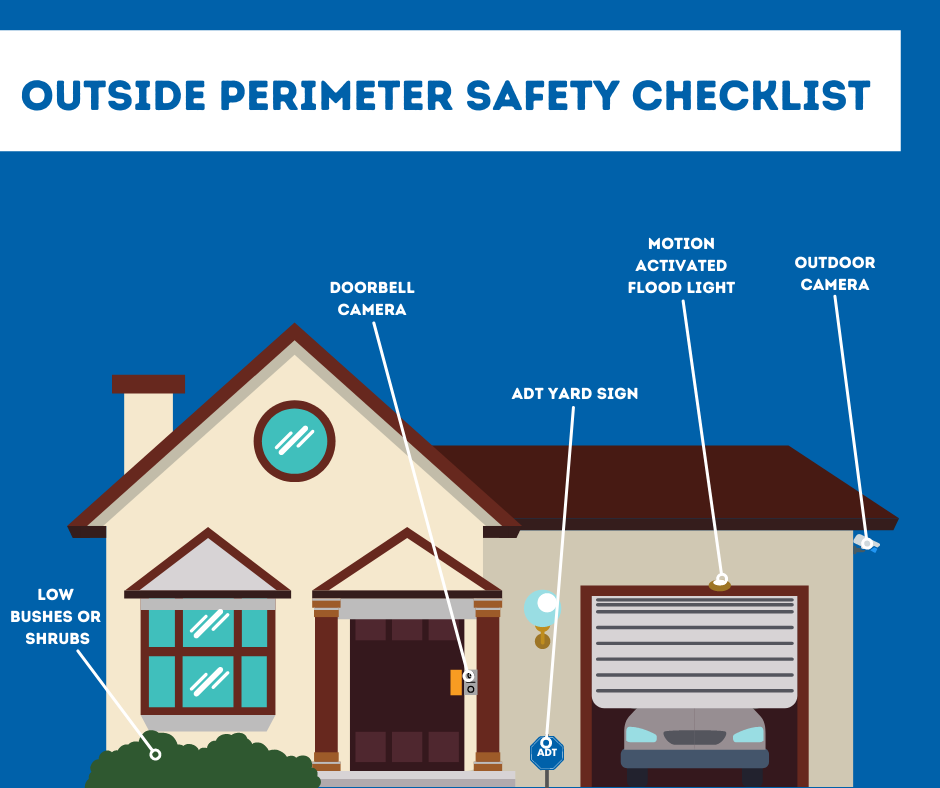
Outside Safety Checklist for New York City
Your landscaping, driveway, and front porch are just as crucial to make safe as the inside of your home. Use this checklist to create a safe outside:
-
Doorbell Camera: See who’s arrived at the the front step before you answer it and welcome visitors. Get a visual on packages and record video clips if they vanish off the step.
-
Outdoor Camera: You can install outdoor cameras to alert you to suspicious movement in your back yard. These cameras are especially useful in places where you might not have a window -- like a side yard or by the driveway.
-
Low Shrubs: Tall shrubs can give you some serenity, but they also block you seeing into the yard. Don’t offer potential burglars an area to hide. Plus, high bushes or trees around your house can jam up gutters and summon ants and termites.
-
ADT Signage: One of the largest discouragements for home intrusion is telling would-be rogues that you use a state-of-the-art ADT security system. An ADT yard sign by the stoop and a window decal will alert people that they might want to shove off to an unprotected score.
-
Motion Triggered Porch Lights: Light is the largest obstacle to those who lurk in the unlit places. Motion-controlled lights on your porch, garage, or deck can shoo possible intruders away. Flood lights also help you work the locks when you come back home on those dark, winter nights.
Contact Secure24 Alarm Systems To Help Complete Your Home Safety Checklist for New York City
While Secure24 Alarm Systems can’t help you with non-security devices on your New York City home safety checklist, we can offer a customized home security. With everything from alarms to thermostats, we can install the ideal system for your house’s needs. Just call (212) 553-6591 for more information or complete the form below. Or customize your own system with our Security System Designer.
